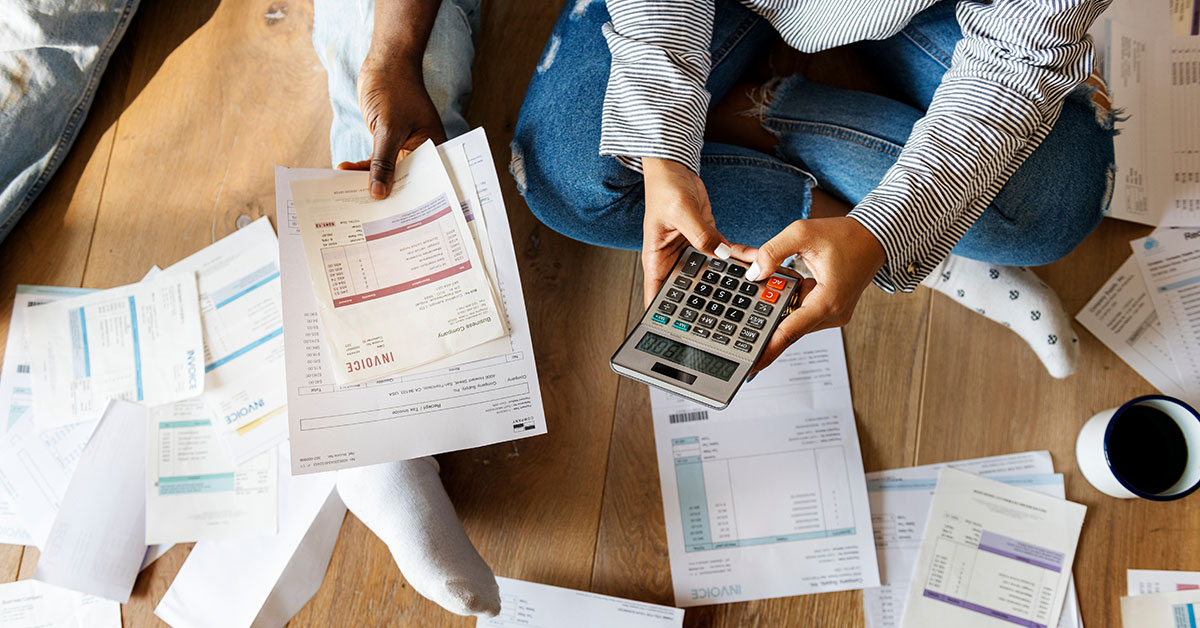
What is a Credit Score?
There are many factors that contribute to your financial fitness. It all starts with a foundation of managing your money with a budget. But, when it comes to making big purchases like a home or car, your credit score plays a major role.
If you’re just starting out building your credit, or you have accumulated some debt and want to work on repairing your credit, you might be wondering how a credit score actually works. So, in this article, we’re going to get down to the basics and look at not only what a credit score is, but how you can start your journey to excellent credit.
What is a Credit Score?
A credit score is a number between 300-850 that represents your lending reputation, in other words, the amount of risk you represent to a lender. The higher your credit score, the better, because a higher number represents that you have a history of taking out a reasonable amount of loans or using credit and paying your debt back responsibly.
What Impacts Your Credit Score?
Your credit score isn’t an abstract number. There are many factors that go into calculating your score. While the exact formula for a score is not known, here’s a general breakdown of what credit bureaus use to determine your score and how much impact each factor has on your credit score:
- New Credit – 10% - Lenders want to know how often you apply for a loan or credit card. Try to keep your hard inquiries (applications) to two or three in a 12-month period.
- Credit Mix – 10% - Lenders like to see a balance of loans and revolving accounts.
- Length of Credit History – 15% - How long have you had your loans and lines of credit? The more established your credit history, the better.
- Credit Utilization – 30% - Credit utilization is how much of your available credit you’re using, and it is recommended to keep this amount below 30%. For example, if you have three lines of credit totaling $5000, try to only use $1500 or less of that credit at any given time.
- Payment History – 35% - The most important factor in your credit score is paying your loans and credit card bills on-time, and making sure none of your accounts go into collections.
What is a Good Credit Score?

Now that you know what a credit score is composed of, let’s take a look at what’s a good score, and what’s not. When you look at this list, don’t get discouraged by the highest levels. In general, most people have a credit score in the fair range.
- Excellent Credit – 740 or higher
- Good Credit – 700 - 739
- Fair Credit – 620 - 699
- Poor Credit – 619 or lower
At the highest level of excellent credit, it will be easy to open new lines of credit and qualify for the best interest rates on loans. The most opportunities are open to those with excellent credit, and you can use this type of score to choose lines of credit with great rewards.
If you have good credit, you’ll also find that qualifying for good interest rates and rewards will be pretty easy. You won’t qualify for the best rewards, and you won’t have as much negotiating power as someone with excellent credit, but a good credit score is an indicator of financial wellness.
With fair credit, you likely won’t qualify for low interest rates on mortgages or auto loans, and it might be difficult to open a line of credit with great rewards. But fair credit isn’t bad credit, and with a few habit changes, you can move up to a good credit score.
Finally, if you have a poor credit score, it will be difficult to qualify for a loan or open a line of credit. If you do qualify, you’ll likely pay very high interest rates.
How Can You Improve Your Credit Score?

If you have poor credit or fair credit, it might seem like you’re far away from the good and excellent category, but it’s actually easier to improve a low score than it is to improve a high score. Higher credit scores require years of history of timely payments, low credit utilization, and no collections.
No matter what your credit score currently is, the most important thing you can do to raise your score is pay all your credit cards and loans on-time, every time. Setting up autopay makes this an easy win.
Once you’ve got an established history of paying your accounts on-time, you’ll start to see your score rise. But make sure you don’t have any collections or other negative-reporting information on your credit report. Keep in mind that paying off collections doesn’t mean it will be removed from your report, but in some cases, collections with a $0 balance are ignored in calculating your score.
These steps will improve your score, but there are also a few other things you can try:
- If you don’t qualify for a credit card because you haven’t established credit, or your score is too low, you can use a secured card to build your credit.
- Once you’ve established credit, try to keep a mix of both credit cards and loans.
- Even if you don’t use a credit card, as long as you’ve paid off the balance, keep it open to help establish your credit history. Just use it once or twice a year and pay it off right away to keep it active.
- Look for discrepancies on your credit reports and file disputes with the credit reporting agencies to get the incorrect information removed.
Once you’re ready, head over to the Annual Credit Report website. You can access a free report each year from all three major credit reporting agencies. Though you won’t be able to see your score, you will be able to see all your installment accounts, loans, and collections, which will help you determine what steps you need to take to improve your score.
Learn More About Credit Scores
| Credit Card Usage & Your Credit Score | 5 Myths About Your Credit Score |
| How to Improve Your Credit Score | The Value of a Good Credit Score |
| What is a Credit Score? | Credit Utilization Ratio |









